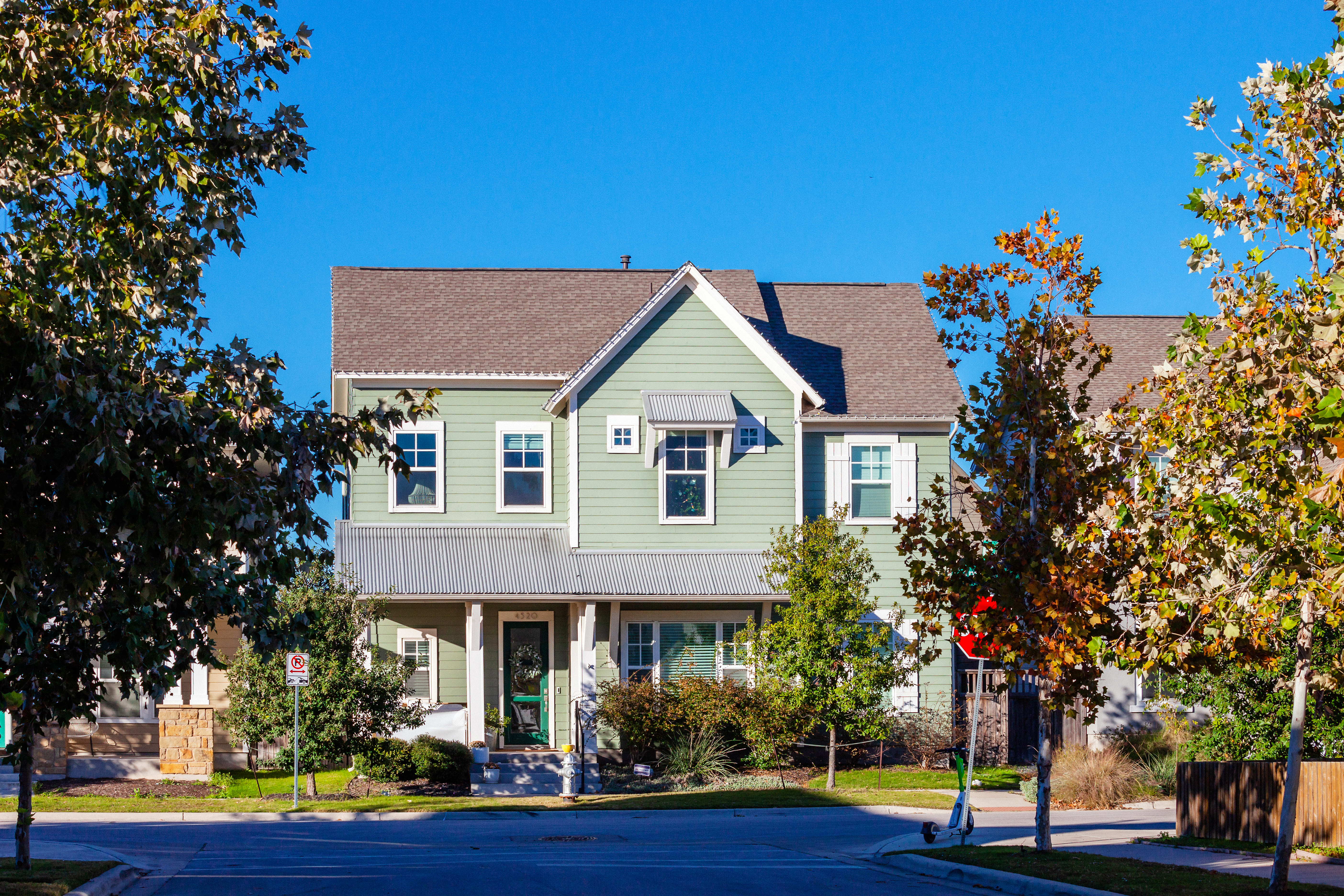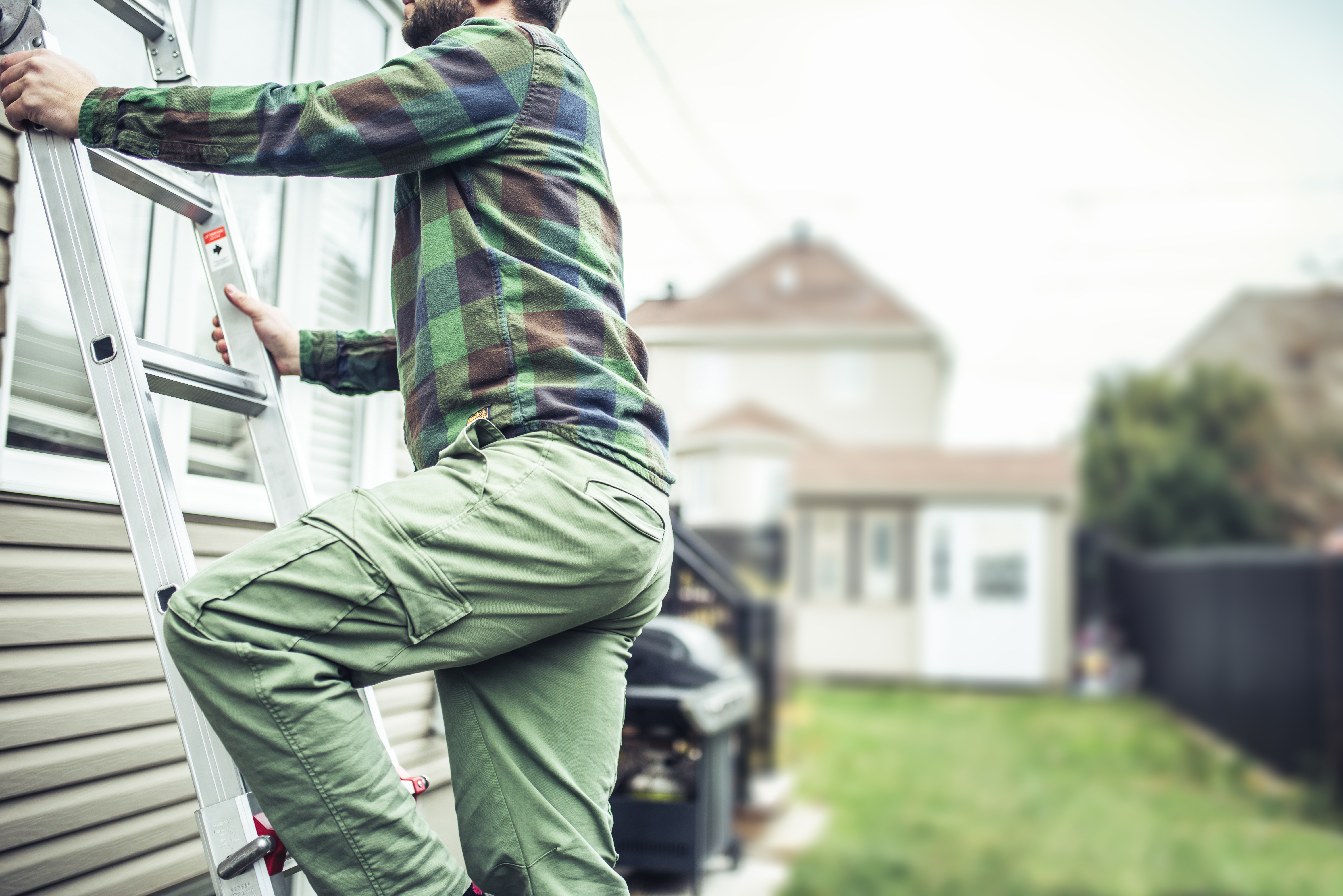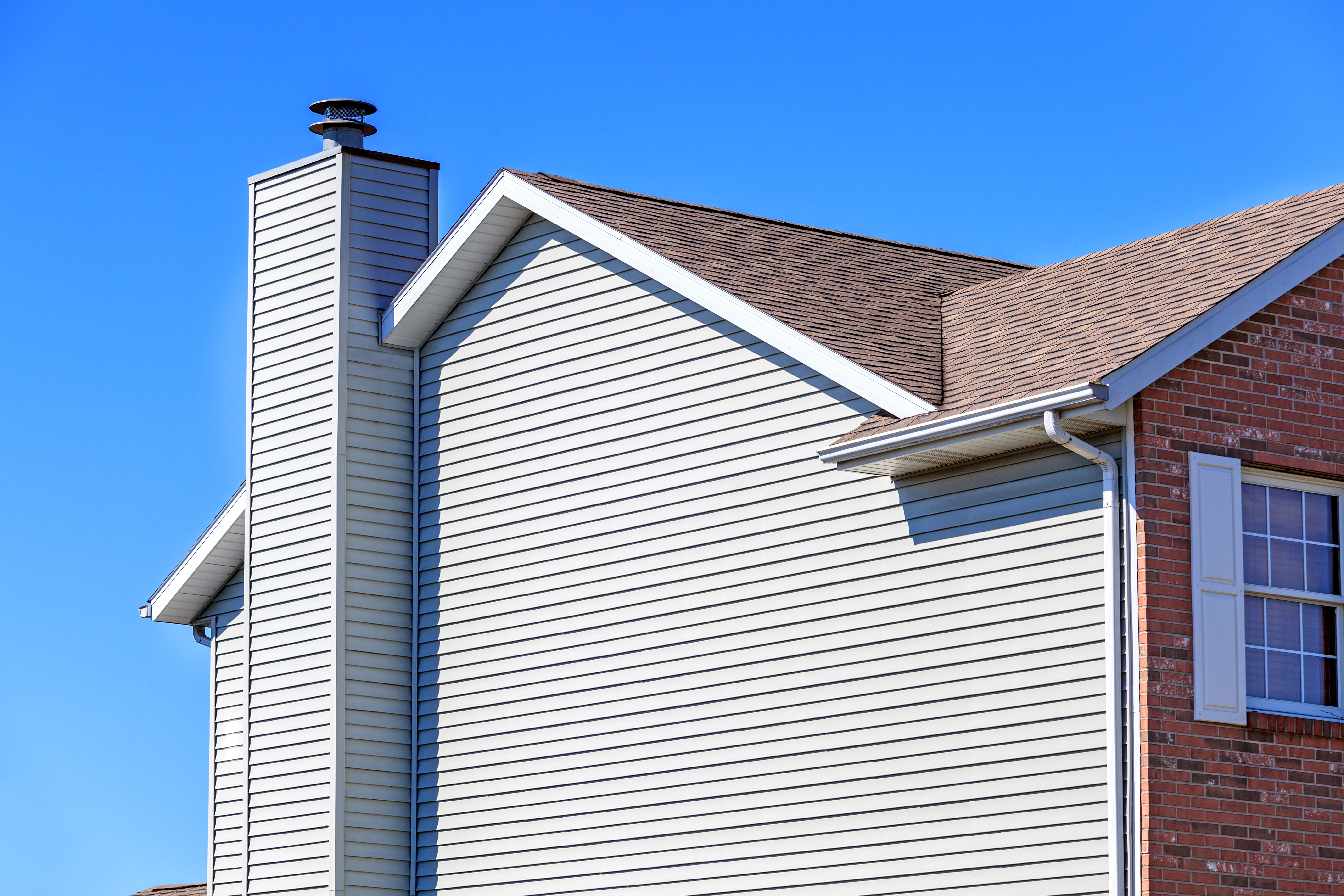
Fiber cement siding is durable, fire-resistant, and affordable. Learn more about fiber cement installation costs in Columbus, OH.
Siding repairs in Austin cost $1,543 on average, with most homeowners spending between $668 and $2,457.


Larger homes with complex designs usually lead to higher repair bills.
Some older homes may have hidden issues that increase demo and cleanup costs.
Repairs in historic districts may require special materials and approvals.
Siding repairs in Austin cost an average of $1,543, but they often range from $668 to $2,457 depending on factors like home size, design, and siding material. Addressing siding issues early can save you money down the line, especially with Austin’s mix of scorching heat and clay soil, which can cause foundations to shift.
Austin’s blazing heat, high humidity, and occasional severe storms can take a toll on your siding. Repair costs in the city depend on factors like your home’s size and design, how widespread the damage is, and your siding material.
The size and shape of your home play a big role in how much siding repairs will cost. Larger homes have more surface area, which means more potential damage. But your home’s design matters too. Homes with simple, one-story layouts are typically quicker and more affordable to repair, while multi-story designs or details like bay windows and trim can drive up labor time and costs.
| House Size in Square Feet | Average Siding Cost |
|---|---|
| 1,000 | $1,000–$13,500 |
| 1,500 | $1,500–$20,250 |
| 2,000 | $2,000–$27,000 |
| 2,500 | $2,500–$33,750 |
| 3,000 | $3,000–$40,500 |
Siding material can have a major impact on repair costs. Some materials, like fiber cement and engineered wood, tend to be pricier to fix because they require specialized tools and skilled labor. Other siding options may be more affordable up front but less durable, leading to more frequent repairs, especially in Austin’s intense sun and humidity. If you live in a historic neighborhood, you might also face higher costs if specific siding materials are required to meet preservation guidelines.
| Siding Material | Cost per Sq. Ft. | Lifespan | Pros (Austin) | Cons (Austin) |
|---|---|---|---|---|
| Fiber Cement | $5–$14 | 50 years | Stands up well to Austin’s heat, sun, and pests; fire-resistant and low maintenance | Heavy and more difficult to install on larger or multi-story homes |
| Engineered Wood | $1–$6 | 20–40 years | Offers a warm, natural look that fits Austin’s style; easier to install than real wood | Needs regular sealing to prevent damage from humidity and UV exposure |
| Vinyl | $3–$12 | 20–40 years | Affordable, low maintenance, and resists moisture | Can fade or warp in prolonged heat; not always approved in historic areas |
| Wood | $1–$15 | 20–40 years | Natural look that works with Austin’s craftsman and bungalow homes; easy to repaint or refinish | Requires frequent upkeep; vulnerable to rot, termites, and sun damage |
| Stucco | $7–$9 | 50+ years | Energy-efficient and performs well in hot, dry climates | Can crack with foundation shifts; moisture issues possible if not properly sealed |
| Brick Veneer | $3–$10 | 70–100 years | Long-lasting, fire-resistant, and well-suited to Austin’s historic and modern architecture | High material weight and cost; repairs may be expensive if the home settles |
| Stone Veneer | $5–$11 | 20–75 years | Adds curb appeal and performs well in heat when sealed properly | Expensive to install; improper sealing can lead to moisture problems |
| Aluminum | $3–$6 | 20–40 years | Fire-resistant and durable in Austin’s humid conditions; resists pests | Can dent easily; poor insulator in extreme heat |
In Austin, most siding needs some level of repair or maintenance every 4 to 8 years or so, depending on the material. Things like intense UV exposure, high humidity, and long stretches of heat can dry out sealants, fade finishes, and weaken protective coatings over time.
Wood siding usually shows wear first, especially without consistent upkeep. Vinyl and engineered wood hold up longer but may still warp or loosen in extreme heat. Fiber cement tends to last the longest with minimal maintenance, but even it can develop cracks or gaps if left unchecked.
Tearing off old siding in Austin can quickly turn into more than just a surface-level job. Especially in homes built before modern code standards, it’s not uncommon to find sun-dried sheathing, missing vapor barriers, or makeshift repairs hidden underneath.
Some older properties may also have siding with lead paint or asbestos, which legally requires certified removal. While Austin’s disposal rules aren’t as strict as some cities, hazardous materials still come with extra costs. It’s best to set aside 10% to 20% of your repair budget to address any unexpected reveals during the demo process.
Generally, the more complicated the repair, the higher the cost. Swapping out a single panel is usually pretty straightforward and affordable, but addressing heat-warped boards, moisture problems, or past installation mistakes can require more time and expertise.
Homes with custom architecture, like angular rooflines or layered facades, also take longer to work on and usually cost more. In some of Austin’s historic districts, repairs may also need to meet preservation guidelines, which can drive up costs if specific materials or finishes are required.
Some Austin homes are harder to work on because it’s difficult for pros to access the repair area. Things like narrow side yards, second-story damage, or thick trees and fencing can make basic repairs costlier to fix. Generally, whenever crews need extra time or special equipment to reach the area, the labor costs go up.
In many cases, post-construction cleanup will be included in your estimate for the repair. But if the repair involves cutting through old siding, pulling off large sections, or exposing lots of damaged sheathing, you may be looking at additional cleanup costs.
Bulk waste, rotted materials, and outdated insulation often require separate disposal. And if your home was built before the 1980s, there's a real chance of lead paint or asbestos, which legally requires licensed removal and adds to the overall cost.
You probably won’t run into design fees for a basic siding repair, but if the job changes the look of your exterior or falls under HOA or historic district rules, design fees might come into play. Some of these projects require design signoffs before work can start. Depending on how complex the job is, those fees can land anywhere from a few hundred to a few thousand dollars.

What you’ll pay for a siding pro in Austin depends on the scale of the work and the contractor you choose. Labor rates, permit requirements, and the complexity of the repair all factor into the overall cost.
In Austin, siding contractors typically charge between $30 and $70 per hour, or $1 to $4 per square foot for repair work. Labor tends to be the biggest cost factor, especially on homes with complex layouts, second stories, or with older siding that needs a more careful approach. If your home is historic or has aging materials, expect higher rates from contractors who specialize in that kind of work.
If your repair goes beyond minor fixes, like replacing large sections or making structural changes, you may need a permit before work can begin. Standard residential permit fees often start around $300 to $400 and typically include basic inspections. Smaller jobs may not need a permit, but if your home falls within a historic district or is subject to local design standards, you might also need a Certificate of Appropriateness, which can extend timelines and add to the total cost.
In Austin, siding contractors don’t need a specific siding license, but they are required to register with the city before taking on residential work that requires permits. Most carry general liability insurance, and while a surety bond isn’t always required, it may be needed for certain types of projects. These protections help reduce your risk, but they can also increase a contractor’s overhead, which often factors into the final price.
Austin’s sales tax rate is 8.25% and usually applies to siding materials, not labor. If your contractor breaks out materials and labor on the invoice, you’ll only be taxed on the materials. But if the total cost is bundled into a single line item, it’s worth asking how they’re handling tax to make sure you’re not being taxed on labor fees.
For more complex siding repairs, you may need additional professionals beyond a standard siding contractor:
Architect: For homes in historic districts or projects that change a home’s exterior appearance, an architect may be required to get plans approved. Their rates vary, but you’re typically looking at 5% to 20% of the total cost.
Structural Engineers: If the siding comes off and there’s movement in the framing or signs of foundation trouble, which isn’t uncommon with Austin’s clay soil, a structural engineer will need to assess it. Expect to pay $350 to $800 for that assessment depending on the scope.
Asbestos Abatement Contractors: Older siding materials, especially on homes built before the 1980s, can contain asbestos or lead paint. If that’s the case, certified removal is mandatory and can run anywhere from $1,200 to $3,300.
Yes, siding repairs can boost home value in Austin, especially when they improve your home’s curb appeal or fix damage that might signal neglect. In historic areas, using materials that match the original style or meet preservation standards can add even more value since they meet neighborhood expectations and help avoid future compliance issues.
Home is the most important place on earth, which is why Angi has helped more than 150 million homeowners transform their houses into homes they adore. To help homeowners with their next project, Angi provides readers with the most accurate cost data and upholds strict editorial standards. We’ve surveyed thousands of real Angi customers about their project costs to develop the pricing data you see, so you can make the best decisions for you and your home. We pair this data with research from reputable sources, including the U.S. Bureau of Labor Statistics, academic journals, market studies, and interviews with industry experts—all to ensure our prices reflect real-world projects.
Want to help us improve our cost data? Send us a recent project quote to [email protected]. Quotes and personal information will not be shared publicly.
From average costs to expert advice, get all the answers you need to get your job done.

Fiber cement siding is durable, fire-resistant, and affordable. Learn more about fiber cement installation costs in Columbus, OH.

In addition to protecting against extreme Midwest temperatures, new siding in Columbus adds curb appeal. Learn about siding replacement cost in Columbus.

New vinyl siding adds value and curb appeal to homes in Columbus, Ohio. Learn about average vinyl siding installation costs in Columbus, Ohio.

Can you put siding over brick? In many cases, yes. Our guide walks you through when and how—and when you shouldn’t.

Learn more about the best types of cement siding and their benefits for your home.

Save money and maintain your home’s structure by learning how to repair vinyl siding in minutes with this handy DIY guide.